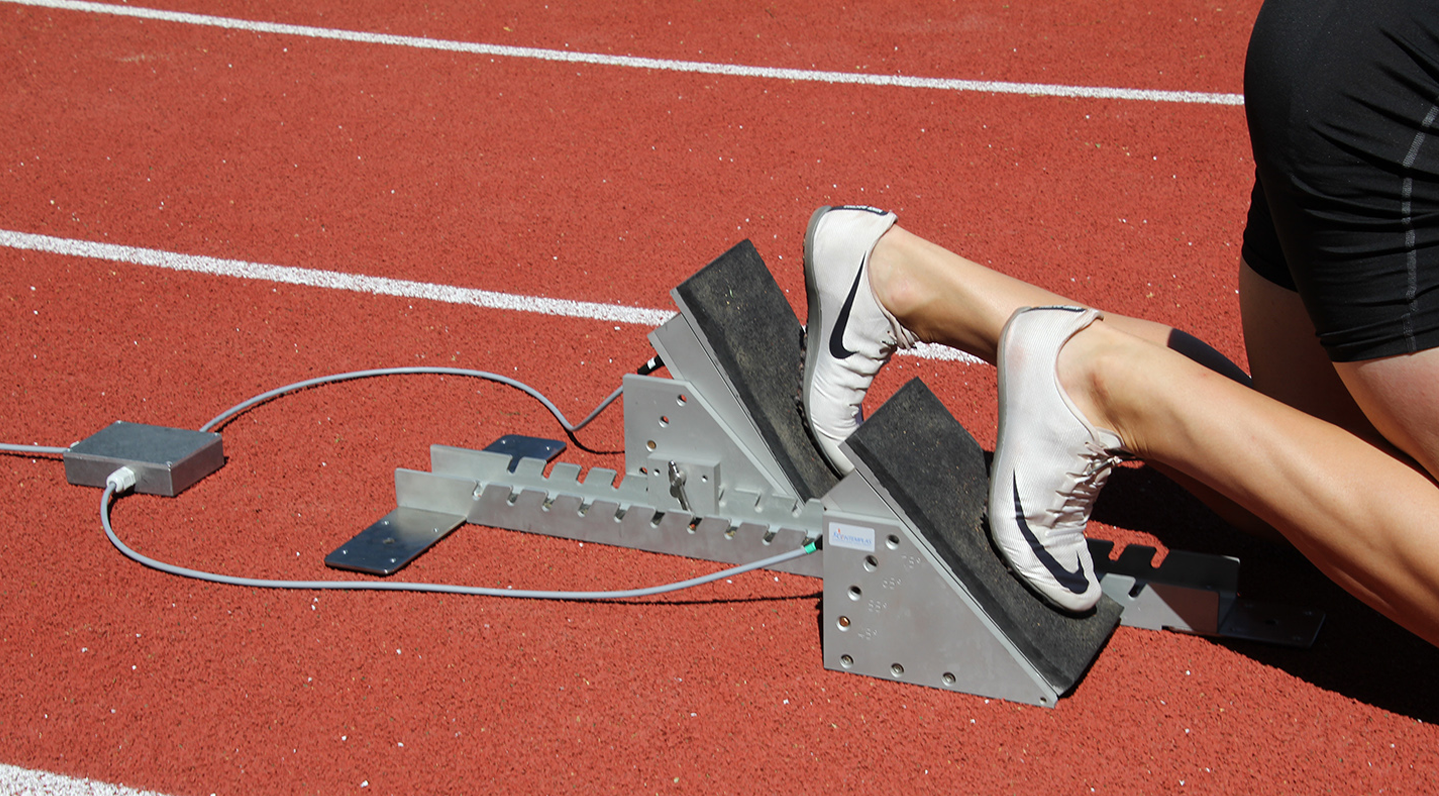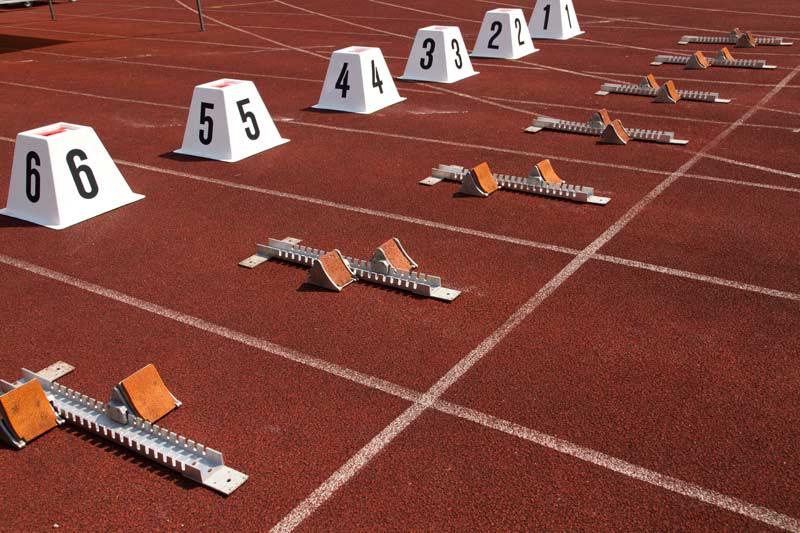What is a Starting Block Analyzer?
When it comes to sprinting, every second counts—especially the very first one. That’s where the Starting Block Analyzer comes in. This modern tool is used by athletes and coaches to study and improve the start of a sprint. It looks at how you push off the blocks, how much force you use, and how fast you react. These small details can make a huge difference in races, especially short ones like the 100 meters.
The Starting Block Analyzer helps athletes become faster by giving clear feedback. Think of it like a fitness coach that tells you exactly what you're doing right and what needs improvement—but for your sprint starts. It is a special piece of equipment that measures your power, angle, timing, and more when you take off from the starting blocks.
This article will explore the full benefits and working of a Starting Block Analyzer in simple language. We will break everything down into six easy parts so anyone can understand—even if you’ve never seen a starting block before.
How the Starting Block Works
Before we understand the analyzer, let’s look at the starting block itself. A starting block is a metal frame with two foot pads, used by sprinters at the beginning of a race. These pads can be adjusted based on the athlete’s height and comfort. Athletes place their feet on the pads, get into a crouched position, and push off when the race starts.
Now, here’s the important part: how the runner pushes off can affect their speed in a big way. A good push means a faster start, which often leads to a better finish. But it’s not easy to know if your push is strong, fast, or done at the right angle—just by guessing.
That’s where a Starting Block Analyzer helps. It connects to the blocks and measures everything that happens when a runner starts. It records how much force is used, how fast the foot moves, and how long it takes to react to the starting signal. All of this data gives the athlete a full picture of their performance.
Imagine you're a sprinter. You push off the blocks, and your coach says, “Good job!” But what does that really mean? With the analyzer, you get real numbers. For example, it may tell you that your left foot pushed harder than your right foot, or that your reaction time was 0.3 seconds. These small facts are what help athletes improve.
Key Features of Block Analyzer
The Starting Block Analyzer is more than just a sensor. It’s a smart device packed with advanced features that help athletes at every level. Let’s look at the most important features in simple words.
Force Sensors: These measure how hard the athlete pushes off. If your force is low, you know you need more strength training. If your push is uneven, maybe your technique needs work.
Reaction Timer: This measures how fast you respond after the “go” signal. Even a tiny delay can mean losing a race. This tool helps athletes reduce delay and become more alert.
Motion Tracking: Some analyzers can track the movement of your legs, showing how your body moves when you start. It helps check if your technique is smooth or needs fixing.
Data Storage and Feedback: Most analyzers save the data from each session. This helps you compare your performance over time. Some models even connect to apps or computers, so coaches can study the numbers and create training plans.
Wireless Connectivity: Many modern analyzers connect through Bluetooth or Wi-Fi. This means you don’t have to deal with messy wires. You can view results right on your phone or tablet.
With these smart features, the analyzer acts like a mirror—showing athletes exactly what they are doing. It makes training smarter, not harder.

Why Sprinters Use This Tool
Sprinting is not just about running fast. It’s about starting fast. That’s why many top sprinters and their coaches use the Starting Block Analyzer. Let’s understand the big reasons behind its growing popularity.
Perfect the Push-Off: The very first step matters the most in a sprint. If you waste energy or time during the start, you may never catch up. The analyzer helps runners see how powerful their push-off is.
Correct Mistakes Early: Without proper tools, it’s hard to see mistakes. Maybe one leg is slower than the other, or maybe your angle is off. The analyzer catches all that and gives clear details.
Track Improvement: Progress in sprinting is often slow and small. The analyzer shows even small improvements in reaction time, force, or position. This motivates athletes and helps them stay on track.
Plan Better Training: Coaches love data. The more they know about how an athlete starts, the better they can design workouts. For example, if the analyzer shows weak force in the left leg, the coach may include special drills to strengthen that leg.
Avoid Injuries: Bad starting techniques can lead to injuries, especially in the hamstrings or calves. The analyzer helps runners keep proper form, which lowers the risk of injury.
In short, the Starting Block Analyzer is like having a super-smart coach who watches your every move and gives honest feedback.
Benefits for Beginners and Experts
You don’t need to be an Olympic runner to use a Starting Block Analyzer. It helps everyone—from school athletes to professionals. Let’s break this down for both beginners and experts.
For Beginners:
-
Learn Proper Form Early: If you're new to sprinting, this tool shows the right way to push off from the start. You can build good habits from the beginning.
-
Understand Mistakes Easily: Sometimes beginners don’t know what they’re doing wrong. With clear feedback, they can fix things fast.
-
Build Confidence: When young athletes see their numbers getting better, they feel more confident and motivated.
For Experts:
-
Fine-Tune Performance: Small changes can bring big results in professional sports. Experts use the analyzer to improve every tiny detail.
-
Stay Ahead of Competition: In elite races, everyone is fast. The person who starts faster often wins. This tool gives an edge.
-
Use Advanced Data: Experts can go deep into the data, looking at angles, timing, and pressure patterns to improve their technique.
Whether you’re just starting or trying to win medals, this tool can help you get better every day.
How to Use It Properly
Using a Starting Block Analyzer is easy, but you must do it the right way to get good results. Let’s go through a simple step-by-step process.
Step 1: Set Up the Analyzer
-
Place the analyzer under or inside the starting blocks, depending on the model.
-
Make sure it is stable and connected properly (wired or wireless).
Step 2: Connect to a Device
-
Use your phone, tablet, or laptop to connect via Bluetooth or cable.
-
Open the software or app that comes with the analyzer.
Step 3: Warm-Up First
-
Never use the analyzer without warming up your body.
-
A light jog, stretches, and practice starts will help.
Step 4: Perform Test Starts
-
Get into your normal sprint starting position.
-
Do several starts, just like in a race, while the analyzer records your data.
Step 5: Review Results
-
Look at the data on your device.
-
Check your reaction time, push-off force, balance between legs, and angles.
Step 6: Work on Feedback
-
Based on results, plan your training.
-
Repeat the process weekly to see progress.
By using it regularly and carefully, the analyzer can become one of your best training tools.
Choosing the Right Analyzer
Not all Starting Block Analyzers are the same. If you want to buy one, here are some tips to help you choose the right model.
Check Features: Make sure the analyzer has the tools you need—force sensors, reaction timers, and motion tracking. Some cheaper models may not give full data.
Easy to Use: Look for a model that’s simple to set up and understand. You don’t want to waste time learning how to use it.
Good Battery Life: If you plan to use it often, choose one with strong battery life or fast charging options.
Data Storage: Make sure the analyzer can store your past training sessions, so you can track your progress over time.
App Support: Many modern analyzers come with apps. Check if the app is available for your phone and has good reviews.
Budget: High-end models can be expensive, but they offer more features. If you're a beginner, you can start with a basic version and upgrade later.
Brand Reputation: Choose from trusted brands that offer support, updates, and warranty.
Doing a bit of research before buying can help you get the best value and performance.
Conclusion: Step Ahead with Smart Starts
The Starting Block Analyzer is changing how athletes train for sprint races. It takes the guesswork out of sprint starts and replaces it with real, useful data. Whether you're just starting your journey or aiming for world-class performance, this tool can guide you every step—or rather, every start—of the way.
By focusing on the very beginning of a race, sprinters can boost their overall time. A good start means more speed, more confidence, and more wins. So, if you're serious about sprinting, using a Starting Block Analyzer might just be the smartest step you take.
Frequently Asked Questions (FAQs)
Q1: What is a Starting Block Analyzer?
A: It is a tool that measures how an athlete starts a sprint. It checks things like force, speed, and reaction time to help improve performance.
Q2: Who should use this tool?
A: Both beginners and professionals can use it. It helps everyone improve their sprint starts.

